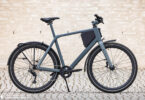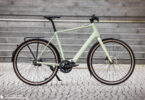The Smart EQ Forfour convinced us on paper and on the test ride, but how would it cope on daily rotation – and could we really live with this ultra-compact electric car? After testing two Smart EQ Forfours on a day-to-day basis over a period of months, we’ve not only got the score on Smart’s presence in the electric powered world of mobility, but also why the Smart car that you once knew is on the cusp of extinction and what exactly you need from your daily-usage electric car.

There’s something fascinating about electric cars. Something about how they drive, how they look, and the sense that by driving one, you’re somehow doing your bit for the planet. But there’s also the flipside and a whole lot of bundled-up issues, like charging stations and plug connectors. Everyone from your neighbour to colleagues to random people on the street has an opinion on electric cars and wants to join the conversation – but few, if any, own one, let alone adopted it as their go-to vehicle. While manufacturers, politicians and lobbyists are vocal about the benefits, potential customers are just as vocal with their questions: tell us how far it can go on one charge, tell us how long it takes to charge, the hidden costs, and how much of a good time we will have with it. All valid questions.
When an unrefusable offer to lease two Smart EQ Forfours landed on DOWNTOWN’s desk, we asked where to sign. We’re big advocates of urban e-mobility, but it has been hard to shake off the sense that there’s something amiss with how the market is developing. Because surely e-mobility is the only way to go when it comes to small cars for (sub)urban spaces, so why are so many of us struggling to adopt an electric vehicle?
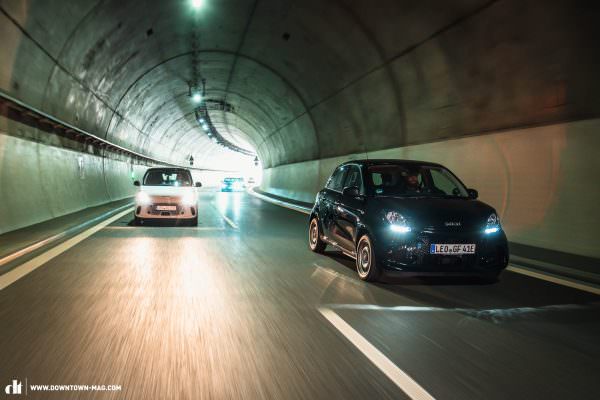
Enjoy a simple life? Minimalism vs. overengineering
Since the launch of the most recent DOWNTOWN issue ‘Riding time is living time’, it’s no secret that we care just as much about having time as we do about having a good time. Living in a time-tight, permanently harassed, eyes-on-the-clock mood isn’t for us. We don’t play that bourgeois game of having too many cars, too many hobbies or too many commitments. Sure, at times we long to have more than we need, but we’ve learned that über-everything isn’t going to make us happier. If anything, we’ll simply wind up being short of everything: time, relaxation, and energy. Fans of classic cars and consumers with a keen eye for just how much mileage you’ll get from a vehicle (and just how many resources you’ll consume to get there), will agree that minimalism and simplicity are a better approach. This is the attitude we adopted when we signed for the electric Smarts: no frills, but hopefully all the more thrills.
Leasing a car for less than your cell contract?
When you’re told that an electric car will set you back € 39 per month, look around for the hidden camera. Nothing in sight. In that case, ask an expert. We duly turned to Erik, our resident authority on cars, who gave it a once-over before okaying the contract, especially for businesses: a three-year lease for € 39 per month and a one-off fee for € 6,000 that we were reimbursed once the German Federal Ministry for Economic Affairs and Energy signed off their approval for the lease.
There was no immediate gratification after picking the colours (DOWNTOWN’s founder Robin went for black, while editorial assistant Susanne picked the white model), as they both came with a wait of six and nine months respectively. By early 2022, both electric cars had found a spot in the office car park – proudly part of the DOWNTOWN family with Susanne and Robin’s names on the papers, and not simply on short-term loan by Jaguar, BMW, Porsche or Tesla as had been the case with previous fully electric cars before. The pair felt like brand new parents, starting a new chapter in their lives without fully knowing what it would entail.
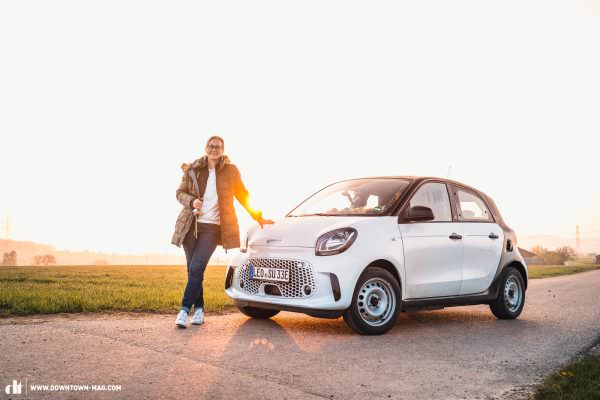
editorial assistant, committed to her ebike and ancient Piaggio. Into simple, straightforward mobility that takes her from A–B with as little impact on the environment as possible.
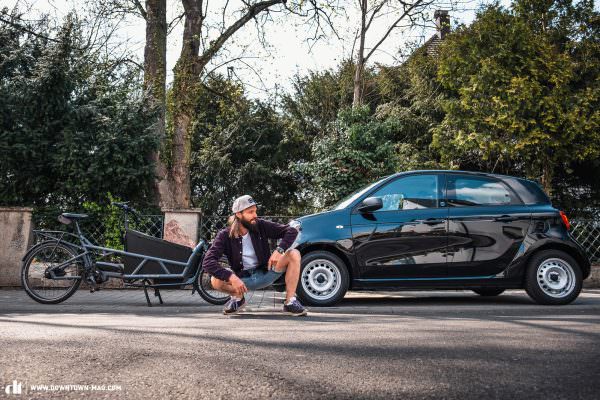
DOWNTOWN founder, committed to his cargo bike and a Porsche 911 dating from 1977. Into mobility that prioritises design, fun, personality.
The spec: All-in or just the basics?
It’s hard to get all worked up when you’re buying a small car like the Smart EQ; they’re the rational choice of car that’s less status symbol and more practical purpose-driven transport. Compact, understated, and in our case, incredibly affordable. We haven’t been sucked in by the thought of upping our eco-credentials, but by the thought of the simplicity these should bring to our daily lives. So many of today’s cars are over-engineered, crammed with hyped features and simulated assistants that mean you can drive with just half an eye on the road as long as you don’t fall asleep. We belong to the school that sees fun in purism, so sure, we’ll take the intelligent connectivity features, but don’t crowd our display or subject us to a brash assistant with a below-average IQ that may ping with something useful but probably won’t.
Despite the mass of different options, we both selected the Smart EQ Forfour with the basic spec. We’d be lying if we said this decision wasn’t partially based on the price, but also on the belief that stripping back to the basics à la Marie Kondo can be liberating. In terms of extra features, we went for year-round tires, air conditioning, heated seats, and a charging cable set. In retrospect, we’d advise getting the parking assistant to alert you to objects – having a tiny car encourages you to park in tiny spaces, which aren’t always easy to manoeuvre. Also of note is that Susanne had to pay extra for the white colourway.
All of the other optional extras would have been nice to have, but we were committed to simplicity. Our minimally equipped cars resulted in a list price of around € 24,000 and a three-year monthly lease of € 39. Compared to the high-ticket Porsche Taycan Turbo Cross Turismo that retails for € 190,000 that we tested for the previous issue, we had now entered a different world and were about to discover the radically different highs and lows of having an ultra-compact electric car.

An electric car is only as good as you use it
With a range of around 120 km and no rapid charge capability, it’s evident that an electric car like the Smart EQ Forfour won’t replace your big family’s mid-sized car any time soon, and nor will you enlist it for a long-haul holiday across the continent. While signing the lease agreement and discussing where we planned on using the cars, it struck us that they were mainly quick trips across town for meetings, to the office, for shopping or visiting friends. It fit the bill for a second car, allowing you to leave the gas-guzzler behind for short sprees, or even your only car if you’ve got good train links nearby and consider hiring a more spacious, long-range car for holidays. There’s no one-size-fits-all solution for modern-day mobility, as we’ve all got our own needs. Take Robin and Susanne: when not ripping around town on his e-cargo bike, Robin enjoys taking his classic car out for a spin, whereas Susanne alternates between her ebike and an e-Smart depending on the weather and the distance. It’s about finding the right multi-pronged approach to mobility that suits your lifestyle, work situation and family.

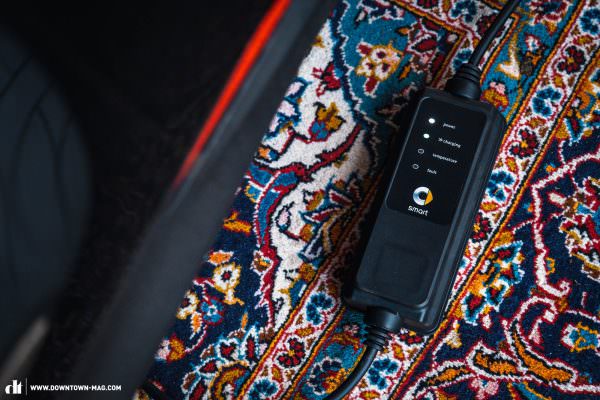
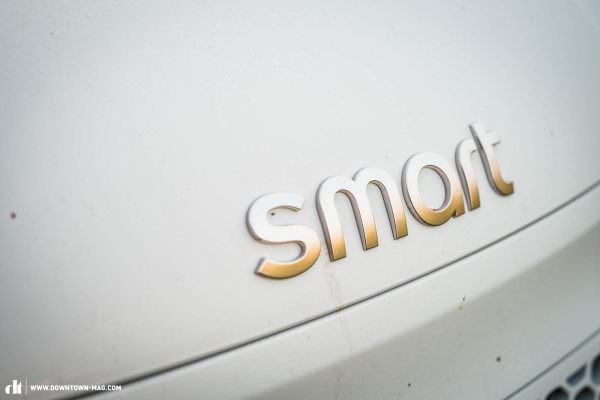
The Smart EQ Forfour in detail
How the Smart EQ Forfour looks:
A lot of electric cars, like the Honda e and the Hyundai IONIQ 5, have been penned with an ultra-modern design language that’s verging on so futuristic it would make even the most avant-garde NFT-designer jealous. The current Smart EQ Forfour does not belong to that category. Instead, it leans towards a down-to-earth, practical, reliable look – somewhere between bourgeois and timeless classic. Is it going to put off consumers? Probably not. The sort of person to buy the Smart EQ Forfour is probably less concerned with aesthetics or even relieved not to be the centre of attention. Bizarrely, driving a car like this results in more roadside chat-ups than usual – although this comes down to the electric experience rather than how it looks. It felt like becoming a dog owner when suddenly all the neighbours with whom you’ve had very little interaction before now clamour to speak to you.
How the Smart EQ Forfour looks and feels
While arguably an entry-level five-door compact car, the Smart EQ Forfour shows up looking more high quality than expected. Built in Renault’s Slovenian production facility in Novo Mesto, it looks simple and functional rather than sophisticated and stylish, but there’s no cheap plastic in sight. It all looks solidly constructed, but there are some discrepancies in production between the two cars: Robin’s black model squeaks and grinds when turning the steering wheel, while the white model requires a certain amount of force to close the doors.
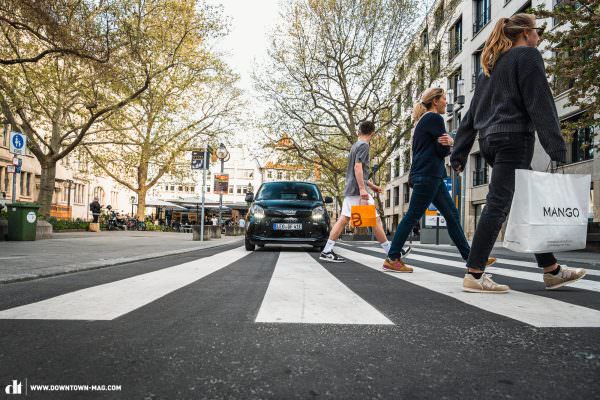
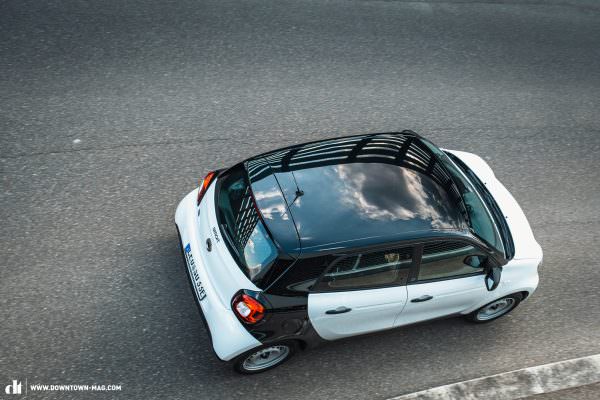
Sense of space and the interior of the Smart EQ Forfour
The front seats are slightly raised in the Smart EQ Forfour, giving you a good view over the traffic. As the rear-view mirror is pretty big, it restricts the view through the windshield somewhat, but there’s a good view out the rear. Given that you sit significantly higher than in a conventional small car, it makes getting in and out of the vehicle a lot less laborious. The fabric seats are firm and stable – no marshmallow-style sinking here. This Smart car suits bigger-built people, too, and it’s only those topping 195 cm that may have to compromise on comfort as Susanne’s 204 cm tall son David can attest to. But, we have it on good record that it’s just as bad – or even worse – in many other cars. For lone drivers or couples, the Smart EQ Forfour starts to make the most sense. Fold down the rear passenger seats and you’ve got a roomy boot with 975 litres of storage volume instead of the car’s standard 185 litre boot. Whether it’s a large laundry basket or your dog, the boot does most daily scenarios. The car weighs 1,200 kg in total and can hold 370 kg, which is comfortably enough for everyday usage. Overall, the Forfour – when compared to the Fortwo – gives you a better sense of security and drives more smoothly on motorways. It’s only once you pile into the Forfour with four fully-grown adults that you become acutely aware of its compact size. Crammed in like this, Susanne was reminded of her very first car, a Fiat Panda. The Smart EQ Forfour isn’t approved for a towbar, meaning trailers and rear-mounted bicycle racks are off the menu.

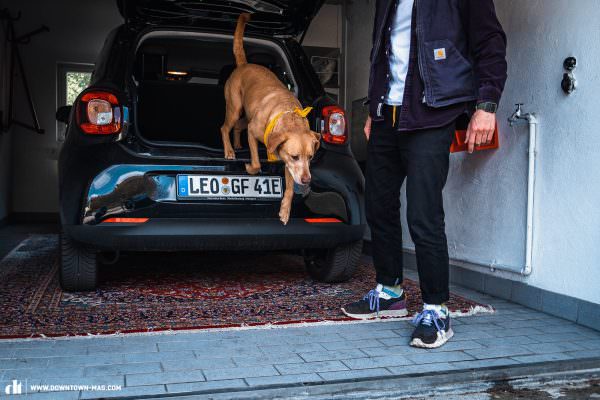
Displays and connectivity in the Smart EQ Forfour:
Dashboards in electric cars are often more reminiscent of a spaceship than a conventional car, but here’s where the Smart EQ Forfour takes a minimalist approach with a touch of retro. The speedometer is central, displaying the remaining range alongside your current speed so you can keep your driving in check and make sure you can get from A to B. Left of the A-pillar, there are two small, circular analogue dials showing you the percentage of charge remaining, as well as the power delivery and recuperation percentage.
The lighting is refreshingly old-school, with a short-wave warm red that’s gentle on your eyes without a hint of the usual glare you get from mid-range or luxury cars when driving at night. With modern cars usually opting for eye-dazzling massive screens (and consequently limiting space for the actual windscreen), it’s refreshing to see how the Smart EQ Forfour in the basic option keeps its minimal approach. And this stretches as far as the radio, which has Bluetooth capabilities for music and calls and a USB port to charge your phone. Everything we need and nothing more. If you want to use Apple CarPlay or Android Auto, you’ll need to add the optional 8″ Smart Media System Connect multitouch display. For those who plan on using your phone to navigate, a mount (such as one from Fidlock) fitted to the central vent would be ideal.
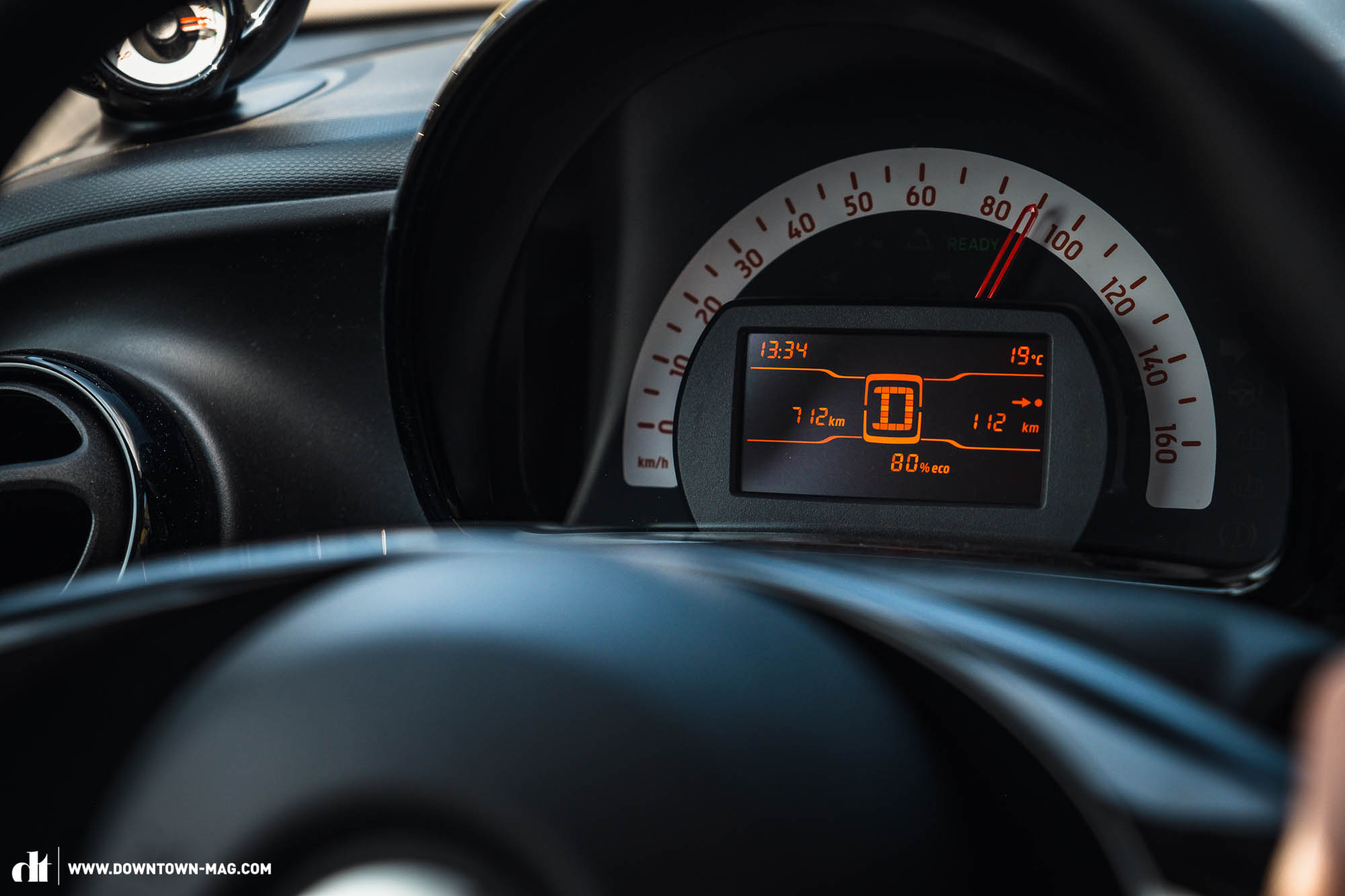
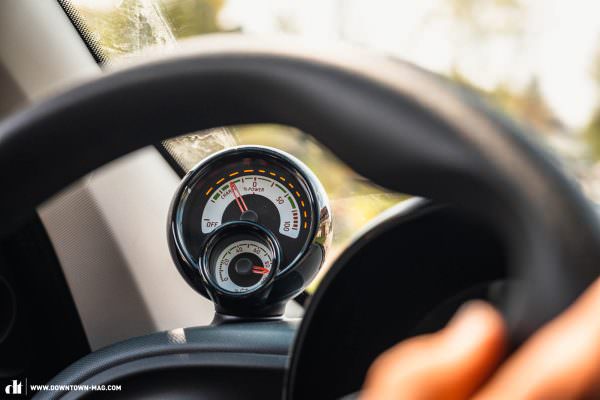
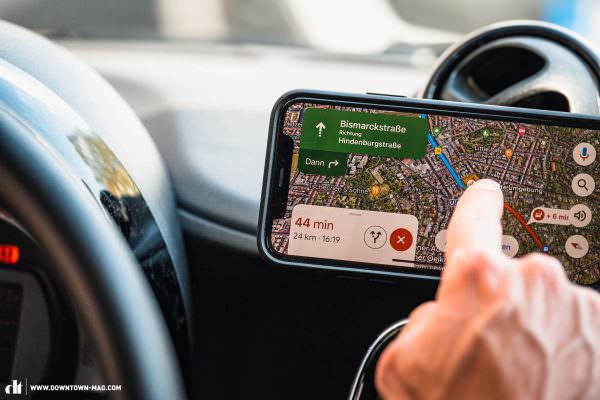
On top of the physical display, there’s also the Smart EQ Control app that shows you the driving stats, the amount of charge, scouts charging stations and pre-heats the car. This is particularly useful when the car is still charging; you can use mains electricity to get it to the desired temperature. The app, which stems from Mercedes Benz, isn’t the most intuitive we’ve used.

How the Smart EQ Forfour drives – Nimble go-kart characteristics meet comfort
No matter who comes for a drive in the Smart EQ Forfour with either of us, the verdict is unanimous: it’s a seriously fun drive. Pure, intuitive, and immediately responsive, it’s an urban whippet for every type of rider. Its small dimensions – 3.5 metres long – make you feel like you’re in a go-kart, accentuated by its impressive cornering and direct steering. As a bonus, the higher drive position allows you a good overview of your surroundings, plus the suspension offers a firm yet comfortable drive with those small tires providing welcome added traction (although you should very rarely push an urban car to its limits due to other road users). The 9.05 metre turning circle makes U-turns as easy as a walk in the park; for comparison, a VW Golf 8 needs 11.1 metres and a three-door VW Up takes 9.6 metres.
This car has more than sufficient acceleration (especially when empty) though can feel somewhat lacking if filled with a group of burly adults thanks to its meagre 82 horsepower. As ever, being an electric car, it silently cuts through the city streets, allowing you to blend into the background.

At higher speeds (when outside of the city), the car is stable and demonstrates good grip even in the wet. We’re going to draw an unfair comparison here, but unlike Robin’s rear-wheel drive Porsche 911 Super Carrera, the rear-engine, rear-drive layout Smart naturally is less susceptible to oversteering. Of note, when compared to a combustion engine Smart, it is significantly smoother. For those used to small automatic non-electric cars, the first thing you’ll notice is the ride in the Smart EQ – it doesn’t have gears and therefore eliminates the more common struggle with clunky, somewhat cheap-feeling gear changes. This is surely down to the significant state subsidies that go towards e-cars, meaning that you arguably get more technology for your money.
When making a transition from a combustion engine car to an electric car, you’ll notice that there’s a significant amount of engine braking when you take your foot off the accelerator. This is due to the car recuperating the energy while you coast and turning it into more electric power. That murmur you hear? It’s a good thing! You can go further, and it also saves you wear and tear on your brakes. Driving at any speed under 20 km/h, your electric car is legally obliged to make a noise for the safety of other road users.
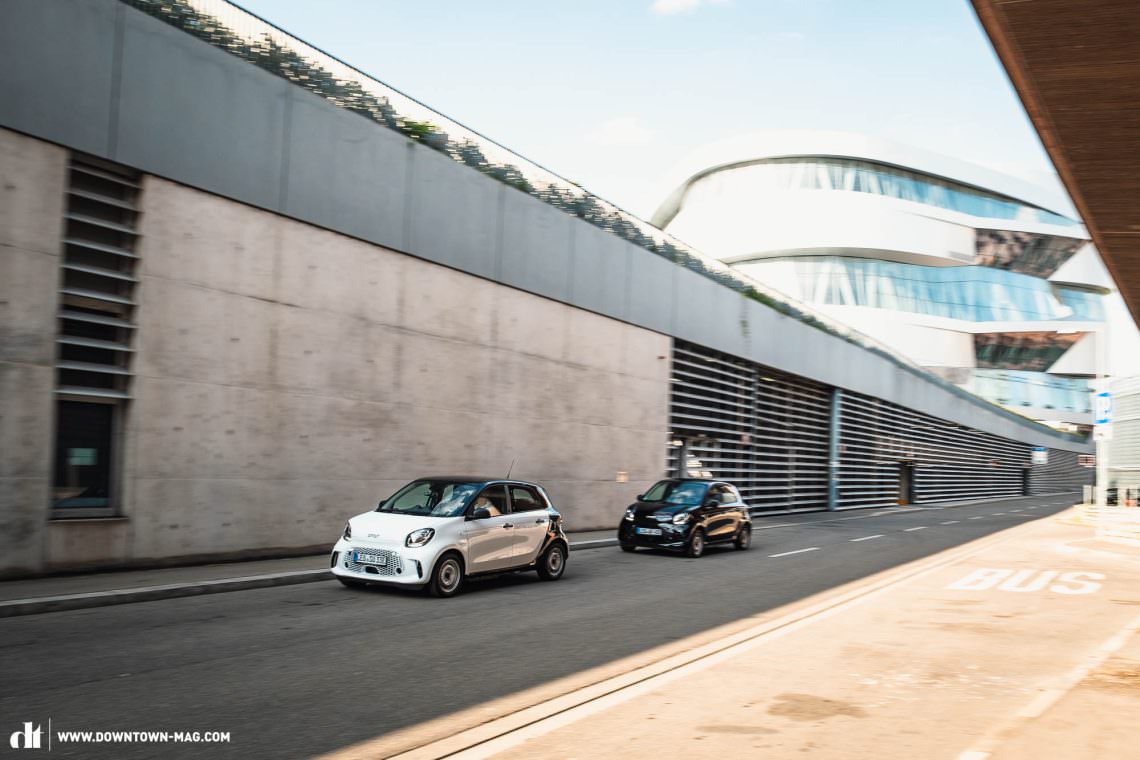
Just enough for the Autobahn, the Smart EQ Forfour is limited to a top speed of 130 km/h. Driving at a consistent speed – like a combustion engine car – without significant acceleration or deceleration gets you better range for your source of fuel and the same can be said for the e-Smart, with the charge taking you a lot further on the open motorway than in the city. However, it’s not designed for long stints and the limited range in general will call a halt on road trips. For short stretches, we found it stable and predictable at high speeds.
Agile but comfortable, small but surprisingly large, 60 kW but still powerful – a mass of contradictions but all part of its urban versatility that makes it suitable as your second car or if you’re an environmentally conscious millennial or Gen Xer. E-urban cars, like the EQ Forfour, allow you to drive at two polar opposites, either burning through your charge, embracing the torque and acceleration out of the lights, or consciously attempting to get max range out of each charge, and anything in between.
What’s the range of the Smart EQ Forfour: Layer up to go long
The official stated maximum range of the Smart EQ Forfour is 145 km but naturally this is a best-case scenario, not taking into consideration ambient air temperature. For example, on a cold day below zero in the winter, your Smart EQ – fully charged – will only show between 110 and 120 km of range, but real performance may even be less than this due to other energy consumers such as heating, air conditioning etc. that can use anything up to 20% of your range. The climate control is one of the main culprits of battery use so we recommend dressing warm – note: the heated seats work well and require limited energy, so we’d suggest using those as your main source of heating. If your windscreen is iced over, the heater takes a significant amount of time to clear it, so allow yourself extra time (and charge) in the winter.
No one should buy into an e-Smart if they’re looking primarily to do long road trips. For short rides in the city on a daily basis, you’ll be surprised at how long you can go between charges, but anything outside of urban short runs will require planning.
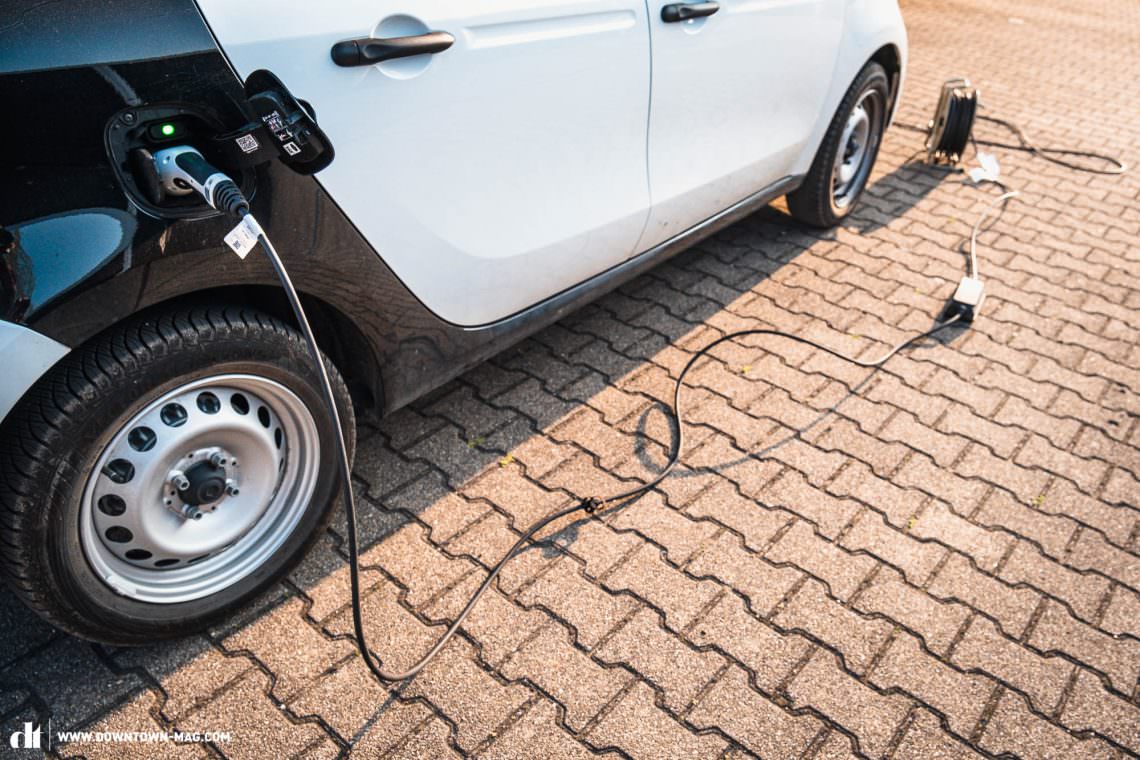
The right charging strategy for the Smart EQ Forfour – No quick box, but still quick
Before getting an electric car, you need to ask yourself not only how you plan on using it but how and where you’ll charge it. There are basically three options to charge the Smart EQ:
Your own wall box:
The luxury option, the equivalent of owning Mayfair or Park Lane in the monopoly version of e-mobility. It requires your own land, something like a driveway with a garage so that you can mount a wall box and charge the car at your leisure while at home and not being reliant on public charging stations. In this case, calculate 3–4 hours to reach 80% charge.
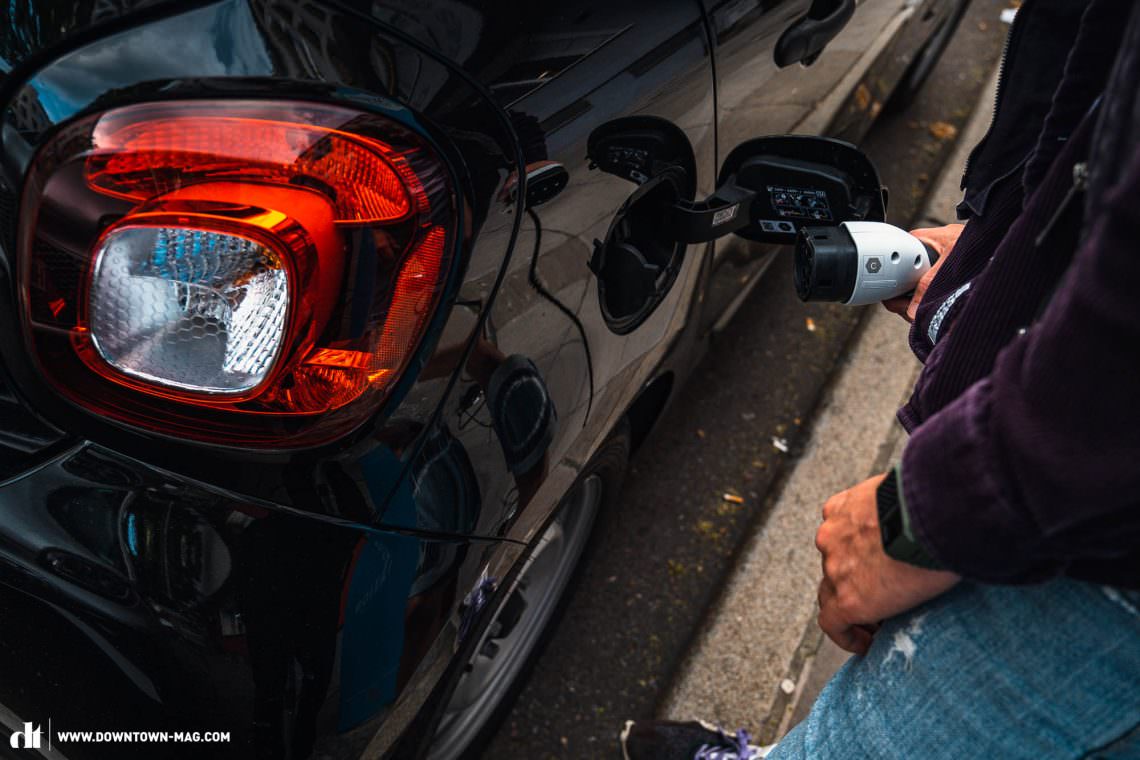
Plugged-in charge:
Not got a dedicated wall box but a garage with standard plugs? You can plug the vehicle in with ease thanks to the charging cable with an earthed plug. Give it a two-hour charge in the afternoon or leave it charging overnight if the car is out and about a lot. Thinking sustainably, Robin makes the most of the solar power source at his parents’ place and charges his car there on sunny days. Unable to install a wall box, Susanne uses a standard plug in her garage, which takes between six and seven hours to reach 80% charge.
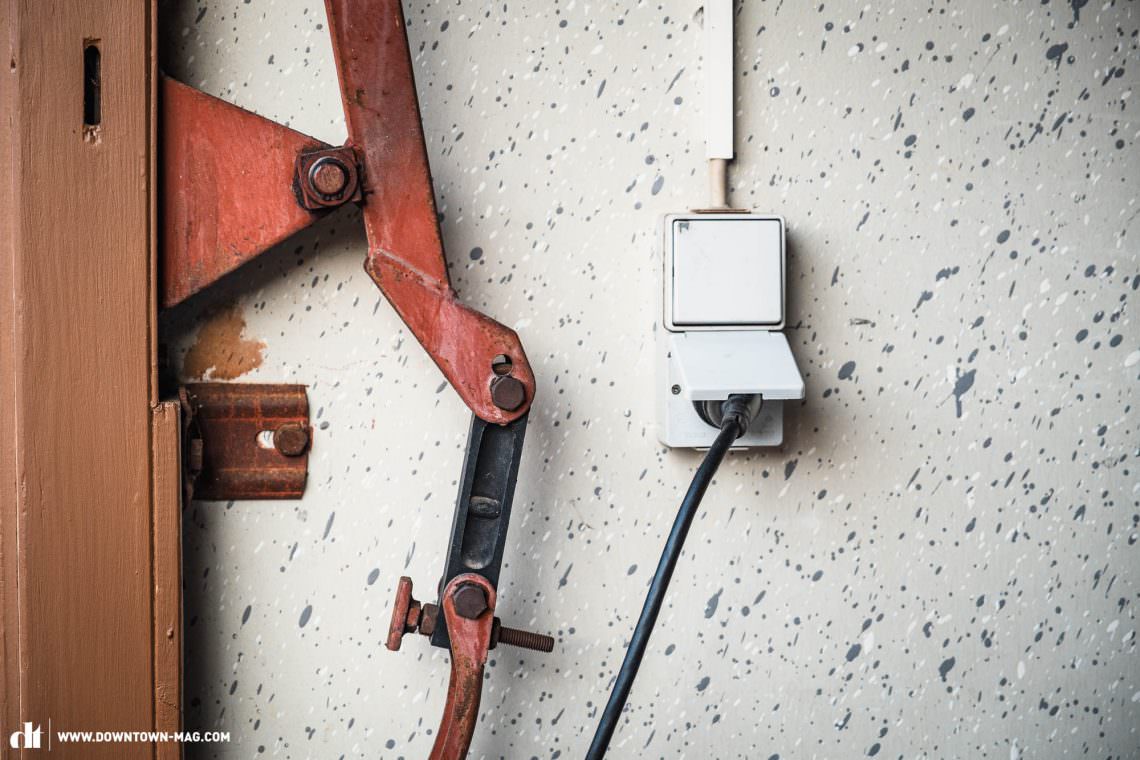
Public charging stations:
Here’s where the game gets a little trickier, requiring cunning planning and nerves of steel at times. Begin by downloading the relevant mobility app, ideally one that’s got a payment function. Most of these apps are free and they show you nearby charging stations as well as the available space. When it comes to payment, you can register for a charging card from a number of providers, who create a monthly bill for your usage. It sounds complicated, but it’ll all change, at least in Germany, where as of 1 July 2023 the federal parliament’s revised Charging Station Ordinance (Ladesäulenverordnung) kicks in. From that date, all new charging pillars will have to provide an immediate payment option by card.

While there’s no rapid charge capability on the Smart EQ, you can upgrade to a 22 kW on-board charger instead of the standard 4.6 kW one that comes as standard, reducing the charging time up to 80% and bringing it down to just 45 minutes. However, given the small size of the battery, going from empty to full is far from superhuman. Those with a wall box or plug connection at home and are not reliant on public charging points can save those extra € 1,500. And if you’re really desperate to drive bigger distances that will require regular charging, perhaps it could be wise to consider other electric vehicles.
Game over? The things the manuals don’t tell you
If you can’t charge the car at home, you’ll need to do your research and plot your closest charging stations. Bear in mind that these can be busy at different times of the day, and there may well be time limits for how long you can park and charge. Go over four hours with certain providers within Germany and you may be charged 10 cents per additional minute. It takes some strategic thinking and might cause a bit of a headache.
If you prefer to play it safe, then the only answer is to limit your journeys and keep a keen eye to make sure you’re staying within a safe radius of your house. We got into the habit of checking for local charging stations at our destination and making a mental note of friends and family with suitable plugs – hi, grandma!


The new Smart #1 – Does the world need it?
Our Smart EQ Forfour is no longer in production, but its ground-breaking smaller sibling will continue until 2023 and that’s it. No more Smart in the current sense. Despite the success of Tesla and other electric mobility brands (on the stock market at least), Smart has always been something of an underperformance. In 2020, Mercedes-Benz and China’s biggest private carmaker Geely Holding launched a joint venture as Smart Automobile Co. Ltd. The first production model is going to be the Chinese-built Smart #1 and the forecast is all about profitability and a new direction. At 4.27 metres in length, this electric-only, five-door is not only significantly bigger than an original Smart, but also a veritable powerhouse in comparison: 200 kW (272 horsepower) versus 60 kW, 180 km/h top speed and a range of between 420 and 440 km based on Europe’s WLTP test cycle. According to Gorden Wagener, Head of Design at Mercedes-Benz, the Smart #1 model should be equal parts sophisticated, equal parts cool, uniting style with smart solutions. Sure, it’s not going to solve the problem of limited space in our cities, but it will raise the stakes in terms of production quality and a love for details. Is that sufficient for the future? If we’re talking sales, then yes. But we’re sad to see how these functional, ego-free small cars for the city are being phased out. We don’t see how the newly formed ultra-compact category of light quadricycles (such as the Microlino and the Citroën Ami) can truly fill the gap that the exit of Smart is going to leave. And it’s worth mentioning here that – in terms of politics – this category doesn’t yet have any potential subsidies or an eco-bonus system in place like other electric vehicles.
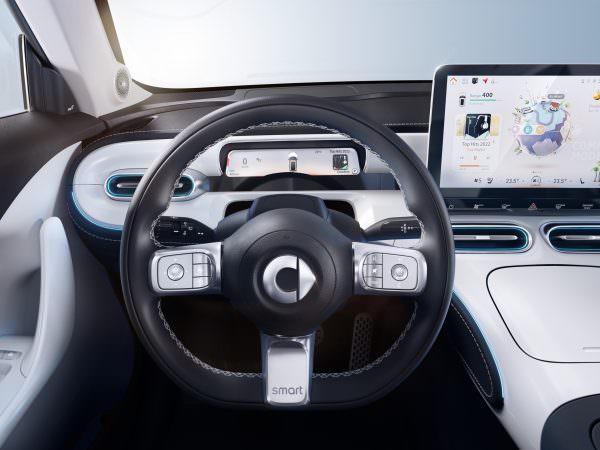
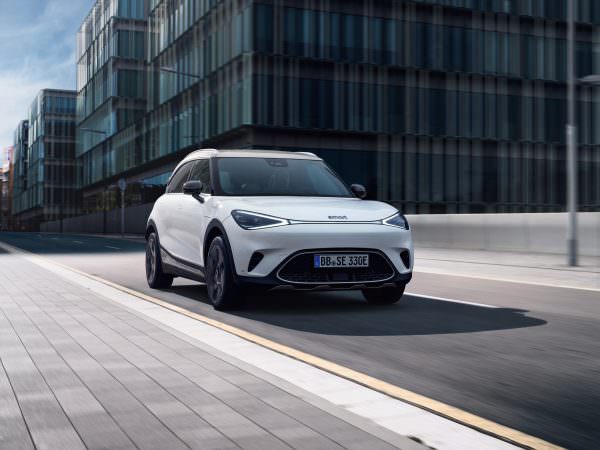
You may now be wondering why we’ve written so much about a car that’s no longer available. The answer is two-fold: you can still buy a second-hand Smart EQ Forfour: and it was a test to scope out the limitations and possibilities for electric mobility in ultra-compact cars. After all these months of driving the EQ Forfour, we only hope the gap will be filled in the future.
Who has fun with this nimble speedster and who doesn’t?
Our time with the Smart EQ Forfour has confirmed that we’re mostly out and about on short trips, so that limited range hasn’t caused us any hassle. If, like us, you’ve got decent public transport options for long journeys or are willing to rent a bigger vehicle for necessities, an electric whippet like this is the ultimate day-to-day car. Life starts to feel almost complete if you can be smug enough to have your own wall box or plug connector that permits you to charge at your will. We’ve also benefitted from Stuttgart’s free parking policy for electric vehicles, which eliminates the parking ticket concern and encourages you to do some impromptu socialising after doing the groceries. If that spot of socialising turns into something more, simply hop on the metro to get home and collect the car the following day.
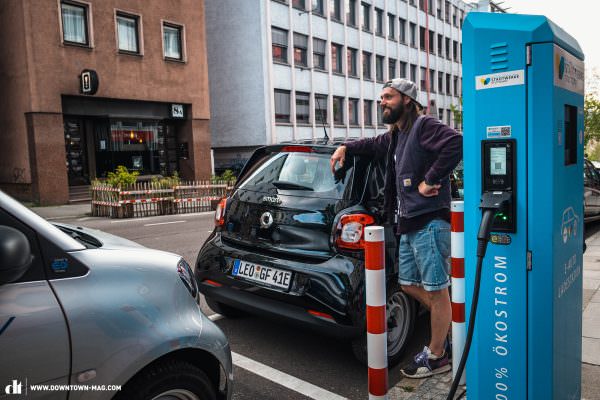

The biggest takeaway from this article: sit down and think carefully before switching to an electric vehicle. Be realistic about where you drive usually and where you might want to drive in the future. Learn what charging options are available to you at home or in your town. Provided you’re not addicted to public transport, averse to hunting down a parking spot, or live off-grid with no mains electricity at home, then we could definitely see the Smart EQ Forfour being a really useful addition to your life.
Our verdict on this electric car? Hell, yes! We had the chance to try it out on the cheap and we don’t regret it for a moment – but admittedly that’s because we had the luxury of charging it at home without being reliant on public charging stations. The Smart EQ Forfour lets you traverse the city on the quiet, is adequately sized, has masses of options, and gives you a lot of fun. It’s a shame that you can only buy it as a second-hand model as we reckon the Smart #1 will be more SUV schnick-schnack than purist practicality.
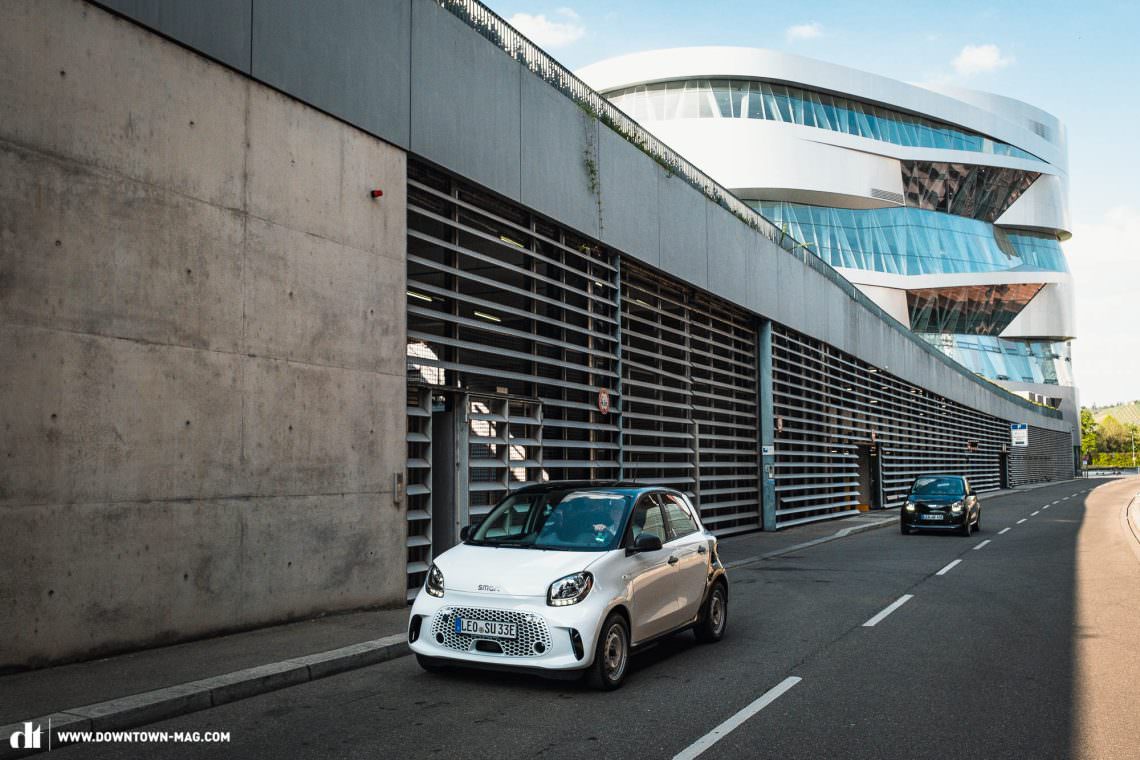
Words: Robin Schmitt, Susanne Feddersen Photos: Benjamin Topf, Robin Schmitt





